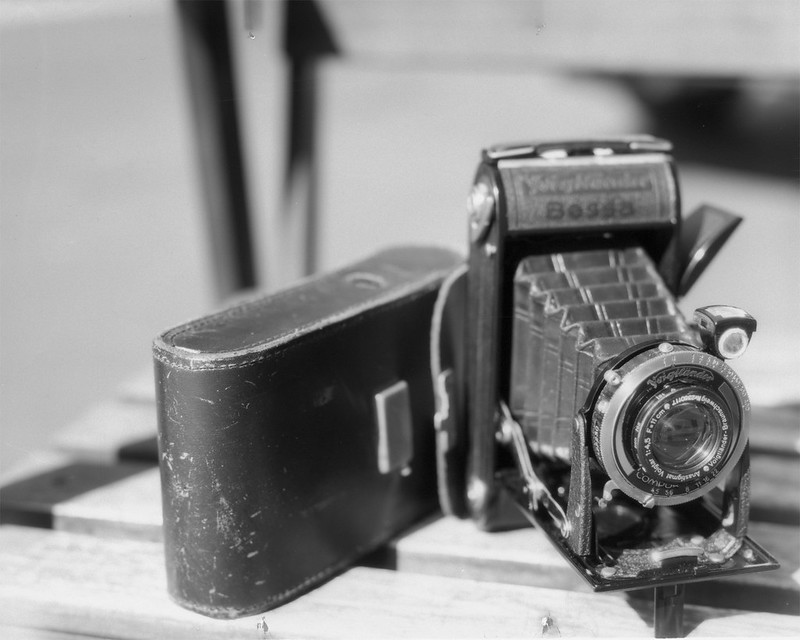Ok, that title is a little misleading. I haven't found a new way to see through clothes or walls. I'll leave that to the comic book writers and the pervs on the interwebz. This is about the latest 'thing' in the large format photography toolbox... x-ray film. Believe it or not, they still make this stuff and they make it cheap! I'm sure that budget is one of the drivers behind the popularity of this film. A 4x5 sheet of b/w film can go for between $1US and $4US while x-ray film is going for around 1/10th of that! Now the down-sides may change your mind about it being a bargain, but I enjoy DIY aspects of my hobbies, so I am all in! X-ray film is ortho-chromatic, which means that it doesn't respond to every color of light like pan-chromatic film does. I haven't been able to find the hard data on this, nor have I done any real testing to see where the sensitivity falls off, but it is pretty much agreed that these films are blue/green sensitive and red insensitive. Next, if you have an 8x10 camera, you are good to go. However, if you have a 4x5 camera, you are going to have to cut the large sheets down to size. This can be done with a regular paper cutter and a red darkroom safety light. I got an 11" paper cutter (the kind with a sliding blade) for about $11 at my local office supply store. I marked the 4 inch and 5 inch marks with a silver marker to make them more visible in the dim light as the cutter itself is made of black plastic. I tried a couple of other things with Xacto knives, but it was too difficult to manage in the dark. Save yourself some frustration and just get a paper cutter that will hold the film square and cut straight. I loaded up my holders and set up some test shots. I rated the film at iso 50 for some shots and at iso 100 for others. Then I did a semi-stand development in a 1+50 dilution of Adonal (Rodinal). Agitation was constant for 30 sec and then 10 sec at the 10min mark. I used the MOD54 and a Paterson tank to hold the film. Iso 50 gave better, more constant tones while iso 100 was quite contrasty but still very usable. Here is a shot of my Voigtländer Bessa taken at iso 50. I could probably even go down to 25 or lower and do a longer development cycle. Maybe next time.

You can see a couple of marks/scratches at the top and bottom of the image. That is where the
MOD54 holder contacts the film. The x-ray film has emulsion on both sides, unlike regular photographic film. It is also very thin. The base and the emulsion layers are quite delicate. I will say that the base of this film is the most beautiful sapphire blue. The negatives are quite stunning to look at. I am using
Kodak ClinicSelect Green X-ray film purchased from
Deep Discount X-Ray. I have 100 8x10 sheets, so I am sure I will be using this film a lot. I am quite pleased with this first image. Let me know your thoughts.

Loved reeading this thank you
ReplyDelete